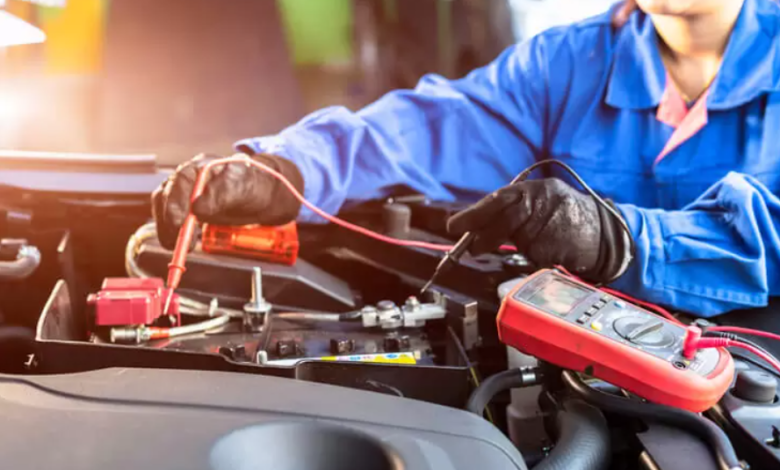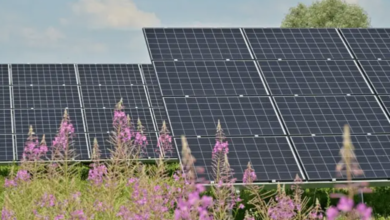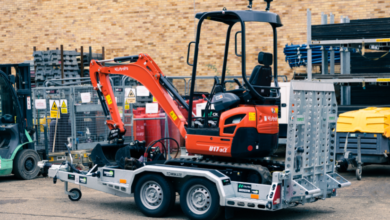What an Auto Electrician Knows About Hybrid And Electric Vehicle (EV) Electrical Systems

The rise of hybrid and electric vehicles (EVs) has transformed the automotive industry and redefined the skills an auto electrician Darwin must possess. Unlike traditional combustion-engine cars that rely primarily on mechanical systems, hybrids and EVs are built around complex high-voltage electrical networks. Understanding these systems requires deep technical knowledge, safety training, and hands-on diagnostic expertise.
Understanding Hybrid and EV Architecture
Hybrid and electric vehicles are designed around one key principle: electrical energy replacing or supplementing mechanical energy. In hybrid models, both an internal combustion engine (ICE) and an electric motor work together. In fully electric vehicles, the motor draws power exclusively from large battery packs. The high-voltage systems in these vehicles operate at levels from 200 to 800 volts, far higher than the 12-volt systems used in traditional cars.
An auto electrician working on such vehicles must understand how energy flows between the battery, inverter, electric motor, and various control modules. They also need to interpret detailed wiring diagrams, recognize different voltage zones, and ensure all maintenance complies with strict insulation and safety standards.
See also: Why Toowoomba Homeowners Are Investing in Strong, Stylish Fencing
High-Voltage Battery Systems
At the heart of every EV is the battery pack. It stores electrical energy in hundreds or thousands of individual lithium-ion cells. Auto electricians trained in hybrid and EV systems must know how to diagnose battery performance issues, manage charging cycles, and identify signs of degradation.
Battery management systems (BMS) are another critical focus area. The BMS monitors cell temperatures, voltage balance, and charge rates, ensuring optimal efficiency and safety. Any fault in the BMS can lead to reduced range, performance drops, or even thermal runaway. Auto electricians must use specialized diagnostic tools to read battery health, isolate faults, and replace defective modules safely.
Charging and Energy Recovery Systems
Charging systems in hybrids and EVs involve both onboard chargers and external infrastructure. Auto electricians ensure the correct operation of charging ports, inverters, and high-voltage cabling. They also troubleshoot issues with AC and DC fast-charging systems.
Regenerative braking systems are another innovation unique to electric mobility. These systems convert kinetic energy during braking into electrical energy to recharge the battery. An auto electrician must understand how the regenerative process interacts with the braking system’s hydraulics and control modules to maintain smooth, efficient operation.
Electric Motors and Inverters
The electric motor is the powerhouse of an EV, converting electrical energy into motion. It’s controlled by an inverter, which converts direct current (DC) from the battery into alternating current (AC) for the motor. Diagnosing performance issues in these systems requires advanced skills, as faults can occur in the inverter’s semiconductor components or the motor’s winding insulation.
An auto electrician experienced in EV work will use oscilloscopes, insulation testers, and specialized software to identify these issues. They also perform maintenance on the cooling systems that keep the inverter and motor within safe temperature ranges.
Control Systems and Communication Networks
Modern EVs are intelligent machines governed by a network of Electronic Control Units (ECUs) and sensors. Communication between these components occurs over the CAN (Controller Area Network) bus, which requires precise electrical integrity to function correctly.
Auto electricians must be adept at using scan tools and digital multimeters to trace faults across these data lines. Even minor voltage drops or grounding issues can disrupt communication and trigger multiple dashboard warning lights.
Safety Considerations
Working on hybrid and EV systems introduces new safety risks. High-voltage circuits can be lethal if handled improperly. Certified auto electricians must wear insulated gloves, use non-conductive tools, and follow strict shutdown procedures before disconnecting components. Many vehicles feature orange cabling to indicate high-voltage lines — a universal signal that extreme caution is required.
Training and certification are crucial. A qualified professional understands not only the risks but also the correct methods for testing insulation resistance, verifying voltage isolation, and reactivating systems after service.
The Role of the Modern Auto Electrician
As technology continues to evolve, the modern auto electrician’s role extends far beyond simple wiring repairs. They are now key players in vehicle sustainability, performance optimization, and the transition to clean energy. With EVs and hybrids becoming increasingly mainstream, these specialists ensure that high-voltage systems operate safely and efficiently.
For vehicle owners, choosing an experienced technician is vital. Whether it’s diagnosing a hybrid battery fault, recalibrating sensors, or performing regular high-voltage maintenance, skilled professionals keep modern vehicles performing at their best. When in doubt, trust an auto electrician Darwin level of expertise: certified, safety-focused, and equipped to handle the future of automotive technology.




